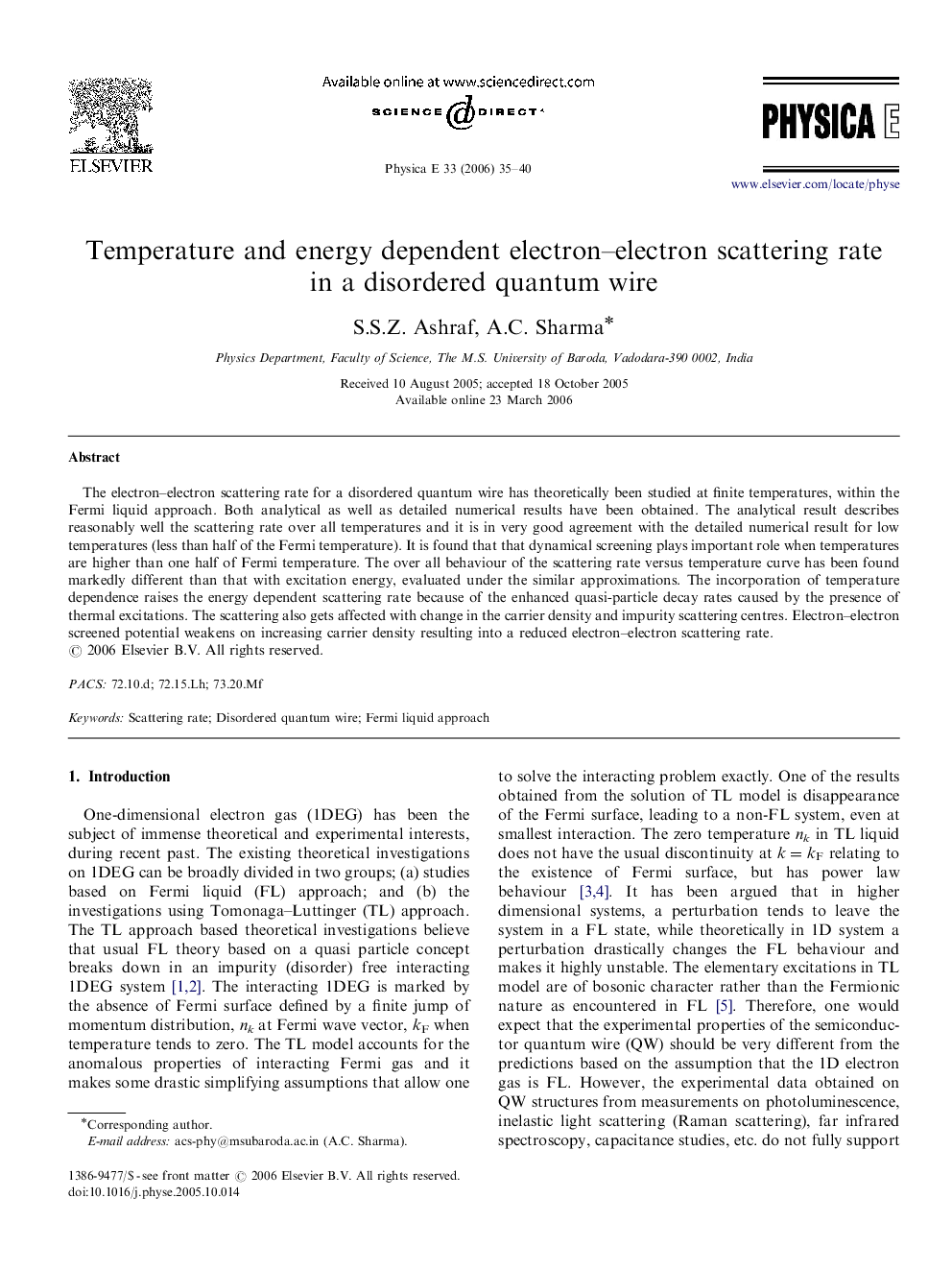| Article ID | Journal | Published Year | Pages | File Type |
|---|---|---|---|---|
| 1547834 | Physica E: Low-dimensional Systems and Nanostructures | 2006 | 6 Pages |
The electron–electron scattering rate for a disordered quantum wire has theoretically been studied at finite temperatures, within the Fermi liquid approach. Both analytical as well as detailed numerical results have been obtained. The analytical result describes reasonably well the scattering rate over all temperatures and it is in very good agreement with the detailed numerical result for low temperatures (less than half of the Fermi temperature). It is found that that dynamical screening plays important role when temperatures are higher than one half of Fermi temperature. The over all behaviour of the scattering rate versus temperature curve has been found markedly different than that with excitation energy, evaluated under the similar approximations. The incorporation of temperature dependence raises the energy dependent scattering rate because of the enhanced quasi-particle decay rates caused by the presence of thermal excitations. The scattering also gets affected with change in the carrier density and impurity scattering centres. Electron–electron screened potential weakens on increasing carrier density resulting into a reduced electron–electron scattering rate.
